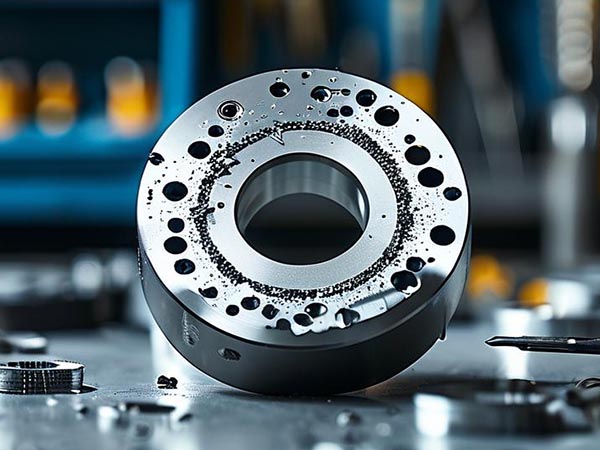Common Drilling Issues in Metalworking and Their Solutions
In the field of precision metal processing, the quality of drilling operations directly impacts product performance and assembly accuracy. In practice, persistent issues such as excessive burr formation and hole diameter deviation often lead to higher rework rates and increased production costs. These defects typically result from a complex interplay of factors including material properties, tool performance, and machining parameters. Drawing from metal cutting principles and shop-floor experience, this article presents a systematic set of solutions spanning drill bit selection to process control. It covers parameter optimization strategies for high-speed steel (HSS) and carbide tools under various working conditions, as well as the potential impact of workshop environments on machining accuracy. By establishing quantifiable inspection standards and preventative mechanisms, it aims to help technicians quickly identify root causes and achieve consistent quality control in drilling operations.
Practical Solutions for Burr Formation During Drilling
1. Drill Bit Selection Matters
- Material Choice: For stainless steel, use cobalt-alloyed HSS (HSSE) drill bits; for aluminum alloys, regular HSS bits suffice.
- Edge Preparation: Lightly hone the cutting edge of new bits with an oilstone at a specified angle (see diagram) before use—this can reduce burrs by over 30%.
2. Optimal Speed and Feed Combinations
- General Formula:
- Spindle speed (rpm) for steel = Drill diameter (mm) × 20
- Feed rate = Drill diameter ÷ 100 (e.g., for a 5mm bit, feed = 0.05 mm/rev)
- Special Case: For thin sheet drilling, increase speed by 20% and reduce feed rate by 50%.
3. Backing Plate Trick
- Placing a hardwood or aluminum backing plate (≥3mm thick) beneath the workpiece effectively prevents exit burrs.
Diagnosing and Correcting Hole Diameter Deviation
1. Five-Step Diagnostic Method
- Check Drill Wear: Replace if land wear exceeds 0.2 mm (inspect with 20x magnification).
- Inspect Clamping Stability: Adjust if radial runout >0.05 mm (check with dial indicator).
- Evaluate Spindle Accuracy: If radial runout of a 300mm test bar exceeds 0.03 mm, machine repair is required.
- Assess Coolant Performance: Maintain 8–10% coolant concentration when machining cast iron.
- Optimize Machining Sequence: Drill smaller holes first to minimize deformation during subsequent larger hole operations.
2. On-Site Correction Measures
- Undersized Holes: Use a diamond reamer at a feed rate <0.01 mm/rev.
- Ovality: Apply step drilling—two-stage processing with progressively larger diameters.
3. Tool Compensation Techniques
- Wear Compensation Formula:
- Actual hole diameter = Nominal diameter + (0.02 mm × number of holes drilled)
- Thermal Expansion Compensation Table:
| Material | Compensation per 10°C increase |
|---|
| Aluminum | +0.005 mm |
| Carbon Steel | +0.003 mm |
| Titanium | +0.008 mm |
Recommended Cutting Parameters for Various Materials
| Material Type | Drill Bit Type | Speed Factor | Feed Factor | Cooling Method |
|---|
| Mild Steel | HSS Drill Bit | ×25 | ×0.04 | Continuous emulsion flushing |
| Stainless Steel | Cobalt HSS Drill | ×18 | ×0.03 | Plant-oil-based cutting fluid |
| Aluminum Alloy | Straight-Flute Bit | ×35 | ×0.08 | Mist cooling |
| Cast Iron | TiN-Coated Drill | ×22 | ×0.05 | Dry or MQL (Minimum Quantity Lubrication) |
- Note: Spindle speed = Speed factor × Drill diameter (mm).
- Example: A Φ10mm bit drilling steel = 10 × 25 = 250 rpm.
In-Depth Analysis of Industry Pain Points
1. Low-Volume, High-Mix Production
- Quick-Change Fixturing Systems: Reduce setup time to under 3 minutes, improving adaptability.
2. Deep Hole Drilling Breakthroughs
- Three Key Factors for Chip Evacuation:
- Retract every 5×D (drill diameter) to clear chips
- Use high-pressure internal coolant (>7 MPa)
- Employ custom U-slot drill rod designs
- Ensuring Hole Straightness:
- Pre-drill pilot holes with diameter deviation <0.01 mm
- Use BTA (Boring and Trepanning Association) deep-hole drilling systems
3. Cost Control Calculation Model
- Cost Per Hole Formula:
- (Drill Bit Cost ÷ Tool Life) + Labor Cost + Energy Cost
- Case Study:
- An enterprise optimized cutting parameters and reduced unit hole cost by ¥0.17.
Three Drill Bit Maintenance Tips for Extended Tool Life
1. Proper Regrinding Technique
- Use dedicated drill regrinding machines; limit length reduction per grind to ≤0.5 mm
- Perform static balance testing post-grind (as per illustrated method)
2. Storage Guidelines
- Store carbide bits separately to avoid collision with HSS bits
- For long-term storage, apply rust-preventive oil and use corrugated dividers
3. Wear Warning Signs
- High-pitched squealing during drilling
- Chips turning dark blue (normal colors: silver or pale yellow)
- Machining time increases by over 15% under identical parameters
Conclusion
Preventing drilling defects requires a systematic approach—one that forms a closed-loop feedback system from material properties to dynamic machining processes. The stepwise parameter adjustment methods, environmental control standards, and smart detection techniques discussed here help overcome the limitations of conventional experience-based processing. Special emphasis is placed on edge-strengthening technologies, thermal deformation compensation models, and chip evacuation strategies to enable tailored solutions for different material systems. It is recommended that enterprises establish internal process databases aligned with international standards, aiming to control hole diameter deviation within ±0.01 mm and burr height below 5μm. This integration of theoretical analysis and hands-on expertise offers a reproducible technical pathway to meet the rising precision demands of the metalworking industry.


 We like to do design according to all the customers' requirements, or offer them our new designs. With strong OEM/ODM capabilities, we can fill your sourcing demands.
We like to do design according to all the customers' requirements, or offer them our new designs. With strong OEM/ODM capabilities, we can fill your sourcing demands.